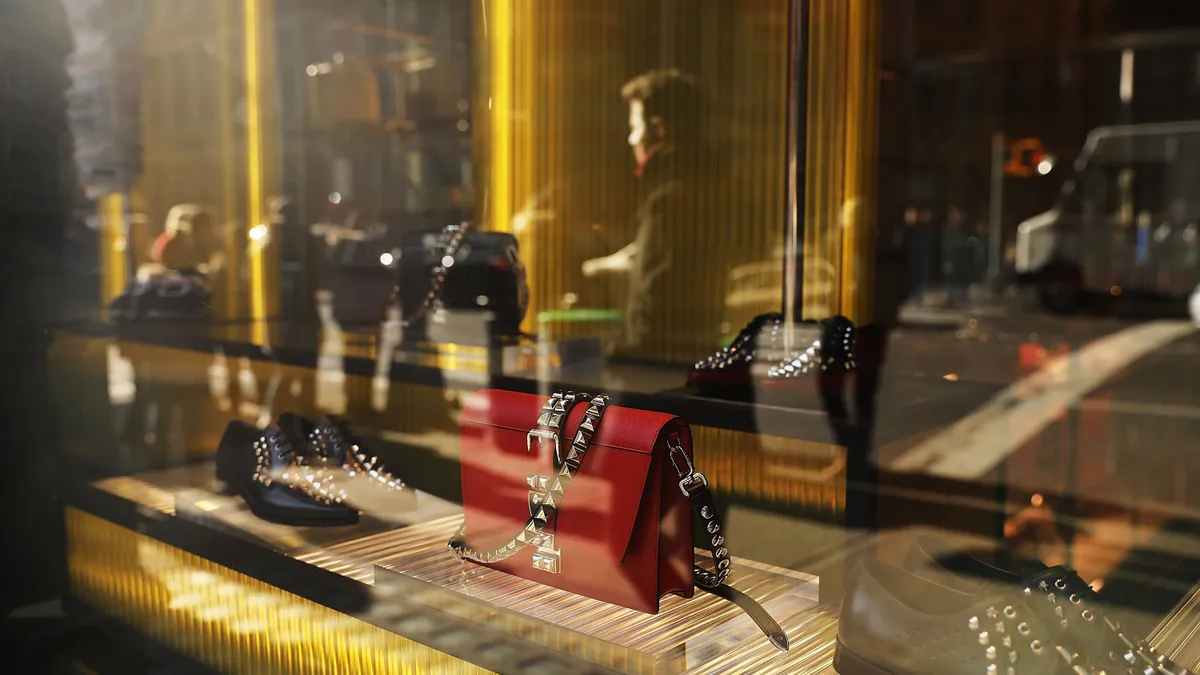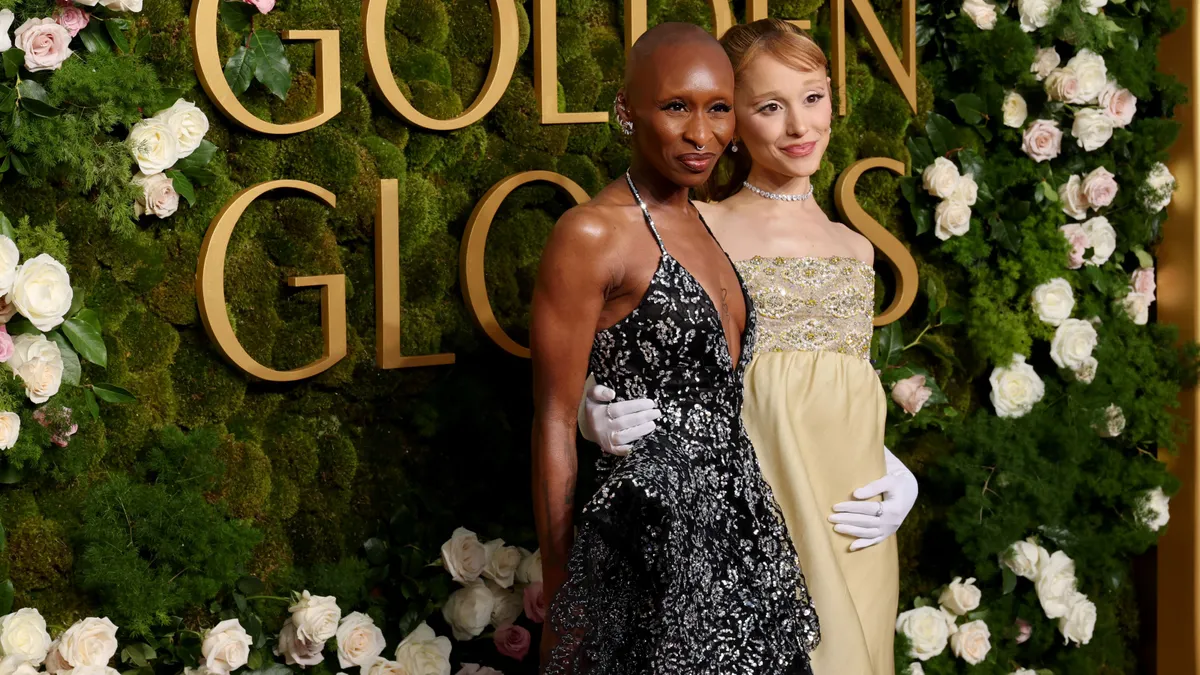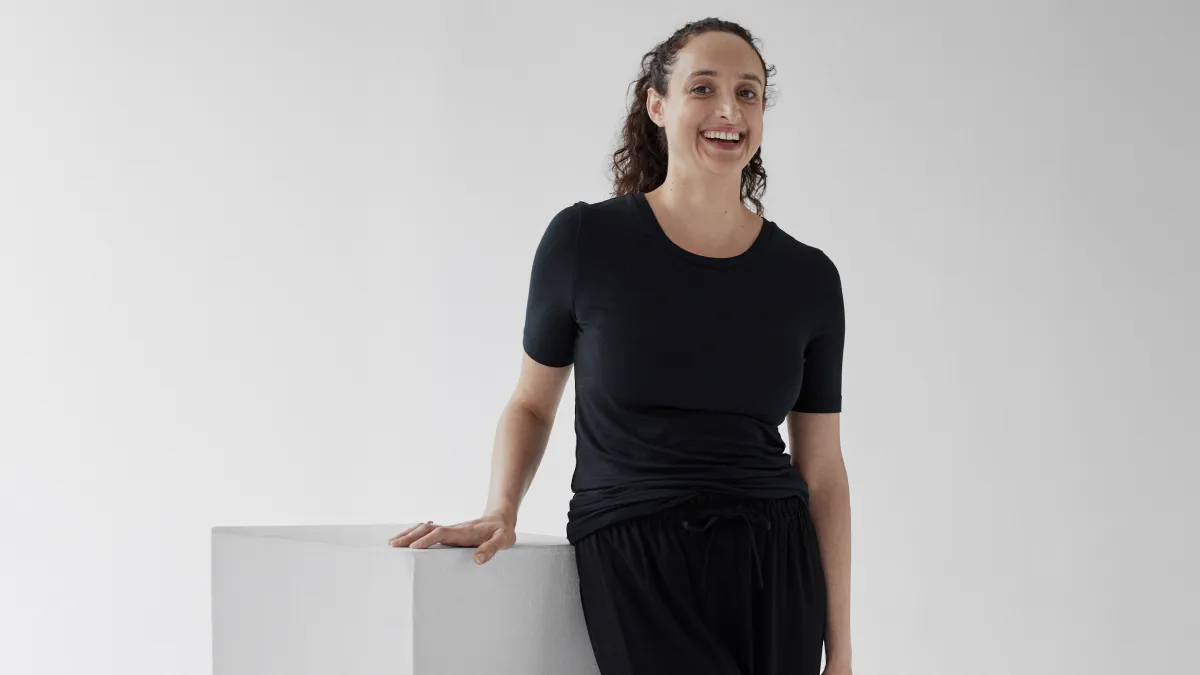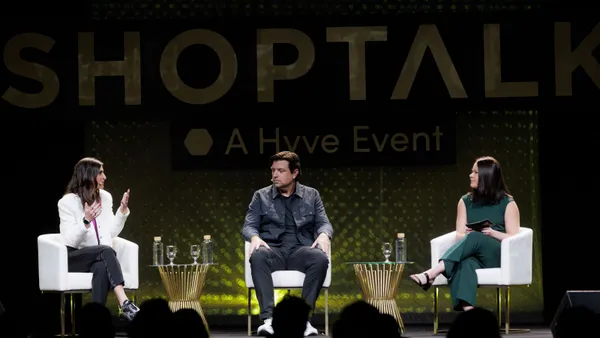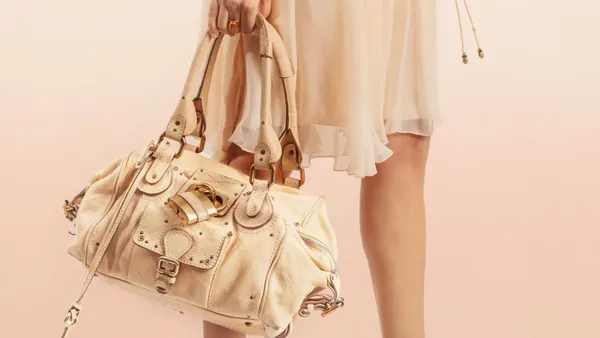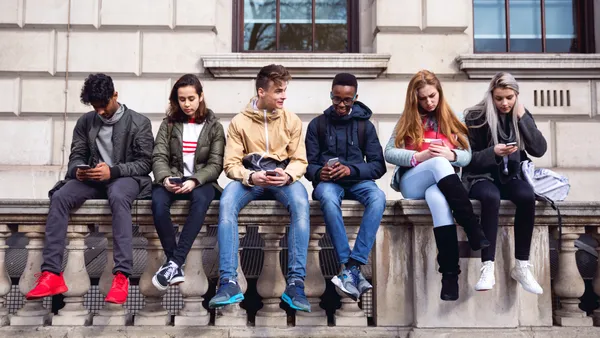Dive Brief:
- U.S. sales of luxury apparel stagnated during the November early holiday period, with much of the decline attributed to “aspirational shoppers” holding back on expensive purchases, according to a report from Earnest Analytics credit card data, which the company said is based on millions of U.S. accounts.
- The study, which was released before Black Friday, covered online and in-store U.S. sales from Nov. 1 to Nov. 8, reported luxury apparel sales dropped 21% year over year, with general apparel down 8%, active athleisure dipping 4%, fashion resale and footwear off by 11%, and fast fashion sales flat.
- Figures from Adobe Analytics show that online-only apparel sales from Black Friday were up 136% year over year, and online apparel sales on Nov. 25 and Nov. 26 were up 154% year over year, indicating that shoppers may have been holding out for digital deals during the earlier part of the month.
Dive Insight:
Online consumers spent a record $9.8 billion on Black Friday, up 7.5% from last year, according to Adobe Analytics.
However, luxury doesn’t seem to be getting a boost from e-commerce, in part because luxury customers don’t tend to spend significantly online, often preferring boutique and in-store experiences.
That means some of the luxury brands that have felt a softening throughout the year may have to wait for late season numbers before seeing any year-end boosts.
“In 2023, the aspirational luxury consumer's spending has experienced a decline due to a combination of economic factors and shifting trends; nevertheless, a potential revival is anticipated during the holiday season, offering a timely boost to their expenditures,” Nora Kleinewillinghoefer, partner in the consumer practice of Kearney, said in an email to Fashion Dive. “Many luxury shoppers now seek unique, niche, or artisanal products, which are often better curated in specialized boutiques or through direct-to-consumer channels, as opposed to broader or more generalized stores. Luxury brands are therefore increasingly focusing on establishing their own flagship stores and exclusive boutiques, creating a direct connection with consumers.”
While Earnest Analytics won’t release exact updates on the holiday figures until the first week of December, Michael Maloof, head of marketing at Earnest Analytics, said early trend numbers are “largely unchanged in the several days after the original data's release.”
“Luxury is still a strong segment with the high end customer, [but] the issue has been weakness in aspirational shoppers who are likely stretching for luxury items,” Maloof said in an email. “We attribute this weakness to overall economic headwinds, resumption of student loan payments, and possibly the transition to experiential spending over goods.”
Even within lower-priced goods, the contrast between fast fashion and general apparel was apparent, according to Earnest Analytics. Fast fashion brands such as Shein (29%), Abercrombie & Fitch (7%) and American Eagle (7%), all increased year-over-year, a sign that consumers were shopping for less expensive apparel.
Discount online marketplace Temu grew more than 1,800% year over year despite facing legal scrutiny; meanwhile, reflective of the sluggish luxury market, Neiman Marcus’ numbers were down 29% from the same November period of 2022, per the report.
“Discounters are doing well in general, especially TJX and Shein, which sell the latest trends at a fraction of the price,” said Maloof. “Consumers seem to be gravitating toward value so far this season. Luxury is still a strong segment with the high end customer, the issue has been weakness in aspirational shoppers who are likely stretching for luxury items. We attribute this weakness to overall economic headwinds, resumption of student loan payments, and possibly the transition to experiential spending over goods.”


